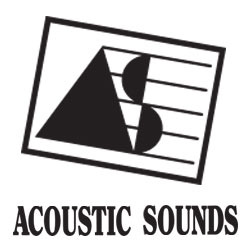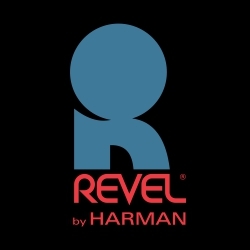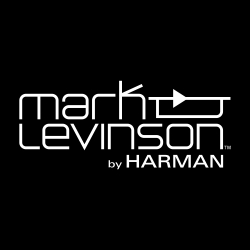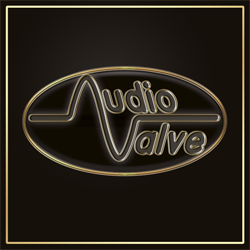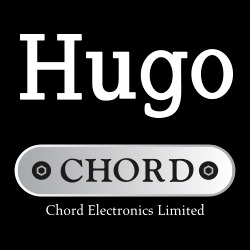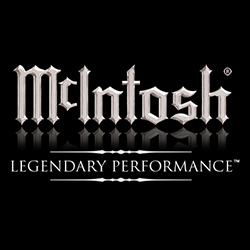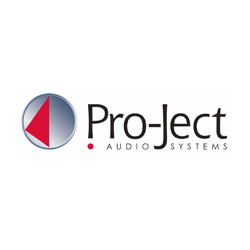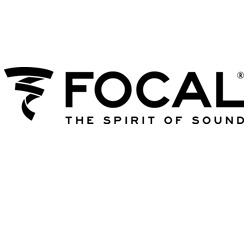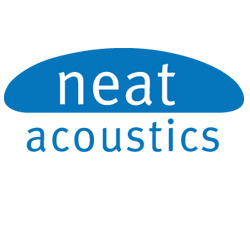Global “size reduction” is something we’ve been taking for granted for years. I mean, the popularity of Baywatch has probably done more to convince the world that all American women have D-cups than anything since Jane Russell in The Outlaw, and it didn’t take trips to the cinema to do it: the show is beamed into hundreds of millions of homes all over the planet. You’ve got Italian teenagers au fait with the adjectives “cool” and “sucks” courtesy of Beavis and Butthead, while the French think that the Americanization of the planet has gotten so bad that they’re trying to make the use of English illegal in business and advertising.
Hi-fi went global decades ago, with a common language, internationally recognisable specifications (even the Germans have all but dispensed with DIN standards when it comes to audiospeak), and the use of English legends on faceplates everywhere bar Korea. But schisms remain, and it’s appropriate that the first Mondo Audio of 1996 deals with what Europe’s governing (commercial) body is doing to consumer electronics. They’ve created an Us vs Them scenario that’s splitting the planet into two markets: Europe and everywhere else. And opting out of Europe because the new rules are so stupid would mean denying one’s company access to roughly a third of the global market for hi-fi. I don’t have the exact population figures in front of me, but the whole of the European Economic Community is larger than the USA, nudging close to 300,000,000 potential hi-fi buyers.
Why is this relevant to an Audio reader? Look through this magazine. Count the number of articles about US-made products, the number of ads. Look through the October issue, the annual product directory, to see just how much of the high-end is American. And nearly every one of them owes much of its health to export. The Japanese may own the mass market, but the specialist sector is firmly Euro-American, with the emphasis on the latter. It is one of the few luxury consumer commodities, as has been pointed out by the Academy For the Advancement of High-End Audio, that’s dominated by American manufacturers. And now this near-monopoly is under threat.
Before you start thinking “protectionism” and “trade barriers”, I should tell you that what’s happening in Europe is not specifically designed to prevent the spread of imports throughout the region. Every manufacturer of products which take AC from the wall has to meet the new standards, regardless of country of origin. The Americans, the Japanese, and the Chinese are in the same boat as every country in Europe, so this really isn’t a case of the Germans protecting the Germans, or the French protecting the French. (Surprise, surprise.) Rather, it’s a case of the dunderheads in Brussels making life difficult for everyone across the board, and the only people who’ll suffer are the consumers.
And small, specialist manufacturers.
Very briefly, the new “CE” regs are designed to make sure that we don’t harm ourselves. It’s a brand of thinking based on a type of paranoia so bereft of logic that we in Europe still cannot believe that it’s actually happening. Before giving you any specifics, let me offer an analogy: it’s as if a government decided, because some child cut himself with a steak knife, that in future all knife blades must be dull. Or, because another child poked himself in the eye with a pencil, that all pencils should have no points and a minimum diameter of two inches, er, sorry, 50.8 millimeters.
There are a few stories, possibly apocryphal, which attempt to explain how this granny state approach to electrical goods came about. Naturally, with a continent almost exclusively using voltages between 220V and 250V, people here are a mite neurotic about things with AC cables. But the Scandinavians have grown particularly tetchy about myriad forms of radiation, eg that which pours forth from your PC monitor, so add it all up and you have fingers pointing at computers and mobile phones – the fastest-growing market sectors in history – as the causes of this decade’s greatest safety woes. All that stray RF…it’s surprising we’re not all walking around with green hair and three heads, eh?
Because Brussels likes to over-react, the mandarins have painted/tainted everything with the same brush: if it uses AC power, then it’s evil and potentially lethal and our citizens must be protected. The RF thing, though, is indicative of the stupidity that the legislators have exercised, accusing all hi-fi products of the same sins as mobile phones and computers. Don’t these cretins know that the audio community has been fighting stray RF for decades? That “we” use power supplies so over-engineered, compared to the crap in the typical PC, that you’d have to turn to the military to improve on ’em?
But the mobile phone/computer problem is but one alleged source of the EEC’s concern. The other is something Ripley will have fun with in 50 years. Apparently, some toddler managed either to take an AC cable and plug it into daddy’s loudspeaker, or took a speaker cable and plugged it into the wall, possible because certain European countries have AC plugs that are nearly interchangeable with 19mm spaced bananas. Because this unsupervised brat stuck something into the mains, every electrical appliance, hi-fi component, and anything else electrical now has to have completely shielded plugs and sockets – EVEN IF THE PLUGS OR SOCKETS DON’T CARRY OR CONDUCT AC.
That’s right. Banana plugs, RCA-type phono plugs, naked spade connectors, they’re all under threat, along with all-metal binding posts and phono sockets. With the exception of existing XLR-type hardware, it looks like every hi-fi component sold in Europe will have to wear newly-shielded socketry. And even if this only adds $1 to each product, you can imagine what it will do to the cost of already-expensive imports overall.
But it gets better. The rumor mill already abounds with tales of no more phono stages because they’re the one area in hi-fi rife with RF. Others sad tales relate to electrostatics: How do you keep a brain-dead Eurobrat away from a grid awash with 10,000 volts? And the heat issue? Apparently, there’s a temperature above which no exposed part of any consumer product must go. Will we see tube amps with cages the size of washing machines, to ensure that the surface temperature remains low enough? Just imagine what life will be like, too, for companies making hair dryers, waffle irons, toasters, clothes irons and anything else where heat is part of the main function. Will the imaginary Euro-stove of the future heat up food by wishful thinking?
Conspiracy theorists have already gone to work with this one, though they needn’t have. The governing body of the European Economic Community has proven for decades that it embodies bureaucracy gone awry, non-elected officials making life hell by banning the use of non-metric measurements in the UK, cucumbers if they curve too much, certain types of traditional sausages, beers, you name it. As if they haven’t got enough serious stuff to deal with, like pollution, government corruption, screwed-up currencies and unemployment. But the conspiracy theorists have a nice one for this latest turn of events. It goes like this:
Because flaunting the new rules is a criminal offence – you can go to jail for selling a product not bearing a CE sticker, or one which has the sticker but doesn’t meet the standards -the stakes have become impossibly high. Testing, for example, could cost as much as $1500 per product. Now this isn’t too painful if you only have a catalogue bearing three models, but even the tiniest high-end manufacturer might have a half-dozen or more. Two preamps, two power amps, a CD transport and a DAC and you’re looking at $9000. That nine grand might have otherwise paid for a lot of advertising or wages or parts.
If you think about, who are those that can laugh off $9000 or even $900,000? Simple: the European and Japanese giants. Hell, they won’t even be paying outside testers because they’re wealthy enough to open their own test laboratories. So one wag suggested that these punitive costs are a way of wiping out scores of small, even insignificant specialist manufacturers in one fell swoop. But, you’re thinking, why should a company with turnover in the billions worry about, for example, some manufacturer of tube amps with a turnover of $1.5million per annum? Simple: add up all of the high-end brands and the chunk of the market they’re taking is that much bigger. But even if it still amounted to pennies, the giants would want to wipe out the specialists for one other, almost bizarre reason: ego.
What’s the one market sector where the Japanese giants have no presence at all outside of Japan? The high-end. We all know that the major brands make big-bucks goodies, none of which stand a chance in the USA or Europe. So, if you wipe out all the opposition, bang! You can start shipping out your awful flagship dross to markets now starved of proper high-end wares.
But that just might be paranoia. I, for one, don’t think that anyone at Matsushita or Philips or Sony really cares about the high-end market because they don’t want to deal with lunatic audiophiles, irrational retailers, psychotic journalists or flavor-of-the-month market instability. They have far bigger fish to fry. So I still put it down to simple bureaucratic idiocy. Which, alas, we didn’t take seriously over five years ago when it was first announced.
It was horrifying to learn, as recently as last June, that most American high-end manufacturers either hadn’t even heard about the new regulations, or thought they could ignore them. But the forces have been mobilized, and the EIA and AAHEA are doing all they can to smooth the way for American manufacturers. Special mention must go to Michael Elliott of Counterpoint, who’s been helping all and sundry to wade through the mass of regulations, while early reports suggest that the larger and better-established high-end companies – Madrigal, Krell and McIntosh spring to mind – have already dealt successfully with the various issues.
Just after this reaches print, I will be visiting the Las Vegas CES. I’m just hoping that, when I write my show report for the European magazines, I won’t be tormenting the readers with tales of yummy hardware which is illegal in Europe.
(Audio, 1996)
[Note: In 2014, the EU announced that it was banning the sale of high-power vacuum cleaners, anything over 1600W. This led to a run on high-powered models in the UK. Also under scrutiny are toasters, hair dryers and even in-car air conditioners.]

